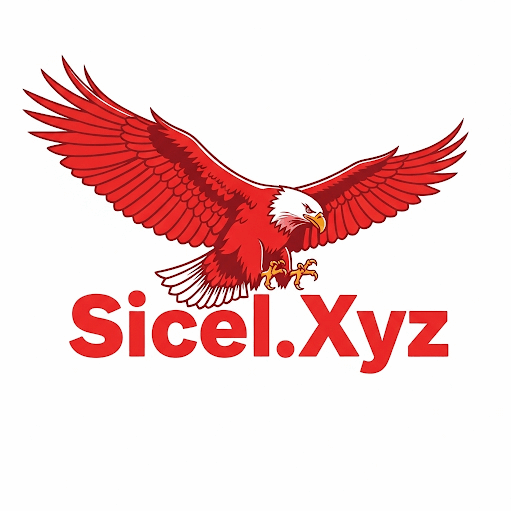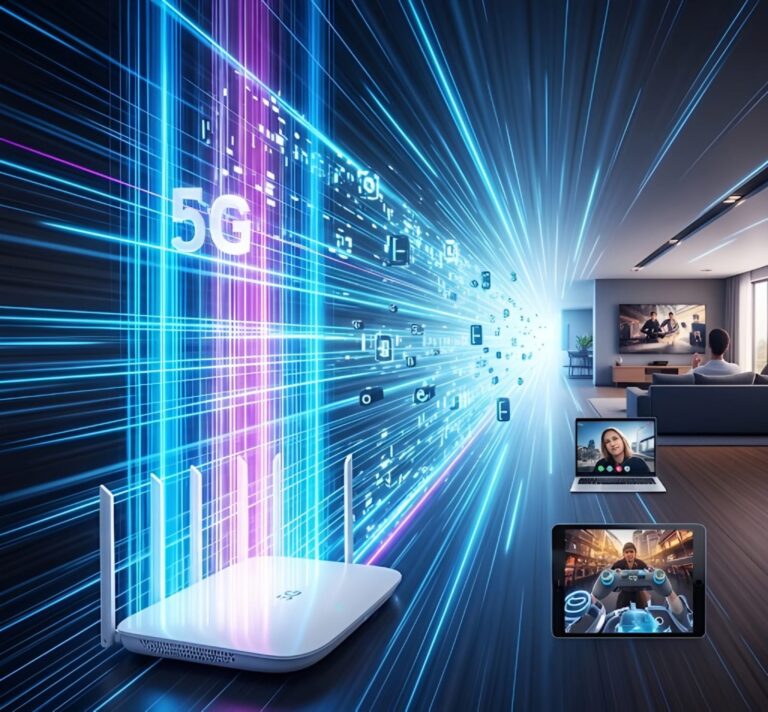What is the typical speed of 5G home internet?
5G residence web has arrived with guarantees of lightning-fast speeds and cable-free comfort. However what does that actually imply in your each day shopping, streaming, or distant work? Whereas 5G is usually marketed with headline-grabbing numbers like “1 Gbps+” speeds, real-world efficiency can range—typically considerably.

1. Understanding 5G: The Fundamentals
5G stands for fifth-generation wi-fi expertise. It’s the successor to 4G LTE and was designed to ship quicker speeds, decrease latency, and better capability. 5G isn’t only for smartphones—it additionally powers residence web by fastened wi-fi entry (FWA), permitting suppliers to supply broadband-like speeds with out cables.
What makes 5G so highly effective is the spectrum it makes use of: low-band (wider protection), mid-band (steadiness of pace and attain), and high-band or mm Wave (ultra-fast however restricted vary). Relying on what band your private home connects to, your web pace could range, even in the identical metropolis or neighborhood.
2. What Is the Common Pace of 5G Residence Web?
Actual-world checks and consumer evaluations present that the common pace of 5G residence web ranges between 100 Mbps and 300 Mbps. Some customers on mm Wave networks could expertise speeds nearer to 1 Gbps, however these instances are much less widespread because of protection limitations.
Main suppliers like Verizon and T-Cell typically promote speeds of 300–1,000 Mbps, however precise outcomes rely on location, community congestion, climate, and your router setup. For many customers, 200–300 Mbps is a practical common—nonetheless quick sufficient for 4K streaming, gaming, and video conferencing.
3. How 5G Compares to Conventional Broadband
When evaluating common speeds, cable and fiber broadband typically outperform 5G in consistency. Fiber can ship symmetrical speeds of as much as 1 Gbps or extra, whereas cable typically ranges from 100 Mbps to 500 Mbps. The benefit of 5G is mobility and set up pace—no must run bodily strains.
That stated, 5G residence web is catching up shortly and is right for individuals who want high-speed web however lack entry to fiber or don’t need to take care of cable corporations. In suburban and rural areas, 5G generally is a enormous improve over DSL or satellite tv for pc choices.
4. What Impacts 5G Residence Web Pace?
A number of elements can affect your 5G residence web efficiency. These embody your distance from the closest tower, the kind of 5G spectrum used, community congestion throughout peak hours, and even constructing supplies that block indicators. Climate situations may additionally barely affect sign high quality.
Your router and its placement are additionally essential. A high-performance gateway in a central, unobstructed spot will ship higher outcomes than one tucked behind furnishings or in a basement. The extra obstacles between your router and the tower, the extra your speeds can drop.
5. Verizon 5G Residence Web: Pace Breakdown
Verizon’s 5G Residence Web usually delivers speeds between 300 and 1,000 Mbps, relying in your protection space. Individuals utilizing mmWave (Extremely Wideband) networks enjoy faster speeds, while those on low- or mid-band connections may experience results closer to 150–300 Mbps.
Verizon features a high-powered router in its plan, and the setup is plug-and-play. Whereas peak speeds are spectacular, some customers report variability based mostly on location. Nonetheless, for many households, it provides sufficient energy for gaming, a number of units, and ultra-HD streaming with out lag.
6. T-Cell 5G Residence Web: Pace Breakdown
T-Cell 5G Residence Web usually averages between 100 and 300 Mbps, with some customers reporting spikes past 400 Mbps in robust protection zones. T-Cell focuses on mid-band 5G, which provides an excellent steadiness between vary and pace however doesn’t normally hit gigabit ranges.
One advantage of T-Cell’s residence web service is its simplicity: no annual contracts, simple pricing, and a user-friendly setup. Whereas speeds could not match fiber, they’re greater than sufficient for the common family. Streaming, video calls, and light-weight gaming work seamlessly in most situations.
7. Add Speeds on 5G Residence Web
Obtain speeds typically get the highlight, however add speeds are simply as vital, particularly for Zoom calls, dwell streams, or cloud backups. On common, 5G residence web add speeds vary between 10 and 50 Mbps, which is respectable however nonetheless decrease than many fiber plans.
Suppliers are working to enhance these numbers, and as 5G infrastructure evolves, we will count on add efficiency to extend. For now, most customers discover add speeds enough for distant work and day-to-day utilization, although massive file uploads could take longer in comparison with fiber.
8. Is 5G Web Quick Sufficient for Streaming and Gaming?

Sure—most 5G residence web plans are greater than quick sufficient for widespread on-line actions. Streaming Netflix in 4K requires about 25 Mbps, and on-line gaming usually makes use of underneath 10 Mbps. With common 5G speeds within the 100–300 Mbps vary, you will have loads of bandwidth.
Nevertheless, latency additionally issues for gaming and video calls. Whereas 5G normally provides low latency (underneath 30ms), outcomes could range relying in your community and protection.
Numerous real-world evaluations indicate that players and streamers experience seamless, lag-free performance with 5G home internet.
9. Advantages and Disadvantages of 5G Home Internet Speed
The professionals of 5G residence web embody quick speeds, fast setup, and mobility. It is an amazing various for customers with out entry to cable or fiber and doesn’t require technicians or drilling. The speeds are perfect for on a regular basis utilization and even assist demanding duties like video modifying or gaming.
On the draw back, pace consistency can range, and protection continues to be increasing. Excessive-rise buildings, thick partitions, or rural useless zones can intrude with efficiency. Additionally, heavy community visitors in your space could trigger noticeable slowdowns throughout peak hours.
10. The Way forward for 5G Residence Web Speeds
5G expertise continues to be evolving, and future speeds will possible enhance as networks broaden, extra spectrum turns into out there, and newer {hardware} is launched. With the rollout of 5G Standalone (SA) networks and higher mmWave penetration, gigabit speeds could change into extra widespread.
Moreover, corporations like Verizon and T-Cell are frequently upgrading their fastened wi-fi choices to higher compete with conventional ISPs. Anticipate to see extra dependable efficiency, increased add speeds, and expanded protection areas within the subsequent few years, making 5G a extra aggressive residence web possibility.
Closing Ideas
The common pace of 5G residence web at present falls between 100 and 300 Mbps, relying in your supplier and placement. Whereas that won’t but match the consistency of fiber optics, it is quick sufficient for many households and continues to enhance yearly.
In the event you‘re in an space with robust 5G sign and don’t need the effort of conventional ISPs, 5G residence web is price contemplating. It’s quick, versatile, and a stable selection for the fashionable related family. Simply be certain that to verify protection in your space and set sensible expectations based mostly on real-world averages—not simply advertising and marketing hype.



